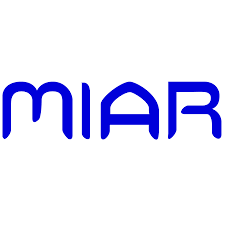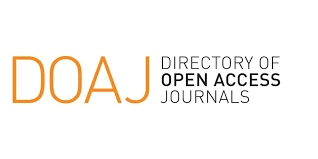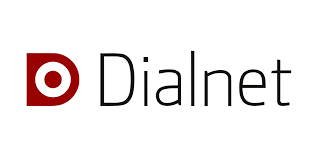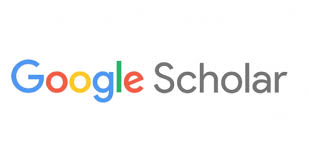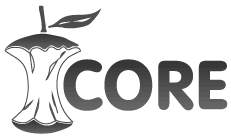A feminine perspective on human talent management
DOI:
https://doi.org/10.36881/ma.v4i1.1126Keywords:
female perspective, talent management, female leadership, gender equality, human resourcesAbstract
This study analyzes human talent management from a female perspective, highlighting women's strategic contributions and the structural obstacles they face in human resources. The objective was to analyze human talent management from a female perspective, highlighting the contributions, obstacles, and proposals that women have faced in human resources. The research was conducted through a documentary review, examining specialized literature and data from international organizations on gender, leadership, and talent management. The results show that female leadership, characterized by a transformational style and skills such as empathy, contributes to organizational sustainability and efficiency. However, representation gaps remain at strategic levels. The discussion suggests that, to achieve real transformation, it is necessary to eliminate biases in recruitment processes, diversify selection committees, and promote co-responsibility policies. The central conclusion is that integrating a female perspective into talent management is an intelligent strategy for building more humane organizations, adapted to current demands.
Downloads
References
Accenture. (2022). Accenture's 2022 U.S. workforce demographics. https://n9.cl/drlo6
Arnau Ripollés, M. S. (2005). Otras voces de mujer: el feminismo de la diversidad funcional. Asparkía: investigació feminista, 15-26. https://raco.cat/index.php/Asparkia/article/view/108979/155090
Atagua-Díaz, Z. (2024). Cómo crear una verdadera equidad de género para distinguirla de una falsa equidad de género. Mujer Andina, 3(1), e030107-e030107. https://doi.org/10.36881/ma.v3i1.950
Bass, B. M., & Riggio, R. E. (2006). Transformational leadership. Psychology Press. https://doi.org/10.4324/9781410617095
Bohnet, I. (2016). What works: Gender equality by design. Harvard University Press.
Catalyst. (2024). Strategies to support Latine women in the workplace. https://www.catalyst.org/insights/2024/foster-latine-womens-success
Deloitte. (2022). Women @ Work 2022: A Global Outlook. Deloitte. https://n9.cl/pd7s2
Eagly, A. H., & Johannesen‐Schmidt, M. C. (2001). The leadership styles of women and men. Journal of social issues, 57(4), 781-797. https://doi.org/10.1111/0022-4537.00241
Eagly, A. H., & Johnson, B. T. (1990). Gender and leadership style: A meta-analysis. Psychological bulletin, 108(2), 233-256. https://digitalcommons.lib.uconn.edu/cgi/viewcontent.cgi?article=1010&context=chip_docs
Eagly, A. H., Carli, L. L., & Carli, L. L. (2007). Through the labyrinth: The truth about how women become leaders. Harvard Business School Press. https://doi.org/10.1108/gm.2009.05324aae.001
Ely, R. J., Ibarra, H., & Kolb, D. M. (2011). Taking gender into account: Theory and design for women's leadership development programs. Academy of management learning & education, 10(3), 474-493. https://doi.org/10.5465/amle.2010.0046
Gilligan, C. (1982). In a Different Voice: Psychological Theory and Women's Development. Harvard University Press.
Goleman, D., Boyatzis, R., & McKee, A. (2016). El líder resonante crea más: el poder de la inteligencia emocional. DEBOLSILLO Clave.
IBM. (2022). IBM 2022 ESG Report. https://n9.cl/v6c0uf
Instituto Más Mujeres. (2025). Las mejores empresas para el talento femenino en 2024. https://institutomasmujeres.com/rankingwomenapproved-2024/
International Institute for Management Development. (2025). Gender inequality in the workplace: factors, and how to combat it. https://www.imd.org/blog/leadership/gender-inequality-in-the-workplace/
McKinsey & Company. (2021). Women in the Workplace. https://n9.cl/hs57b
McKinsey & Company. (2023). Women in the Workplace. https://www.mckinsey.com/featured-insights/diversity-and-inclusion/women-in-the-workplace-2023
Naciones Unidas. (2015). Objetivo 5: Lograr la igualdad entre los géneros y empoderar a todas las mujeres y las niñas. https://www.un.org/sustainabledevelopment/es/gender-equality/
OIT. (2015). La mujer en la gestión empresarial: Cobrando impulso. Organización Internacional del Trabajo. https://www.ilo.org/es/publications/la-mujer-en-la-gestion-empresarial-cobrando-impulso
OIT. (2017). Igualdad de oportunidades y trato entre mujeres y hombres en el lugar de trabajo. Módulo formativo para la inspección del trabajo. Organización Internacional del Trabajo. https://n9.cl/jx2ge
OIT. (2019). Las mujeres en la gestión empresarial. Argumentos para un cambio. Oficina de Actividades para los Empleadores (ACT/EMP)/Oficina Internacional del Trabajo. https://n9.cl/y3kzb
OIT. (2020). Convenio sobre los trabajadores con responsabilidades familiares, 1981 (156). Organización Internacional del Trabajo. https://n9.cl/7wwjl
ONU Mujeres. (2025). El progreso de las mujeres en el mundo. https://www.unwomen.org/es/digital-library/progress-of-the-worlds-women
UN Women. (2019). Progress of the world’s women 2019-2020. Families in a changing world. https://n9.cl/40hty
Unilever. (2023). Gender equality and women's empowerment. https://n9.cl/pdrdq
Unilever. (2024). Igualdad de género y empoderamiento de las mujeres. https://n9.cl/52j4h3
US Bureau of Labor Statistics. (2021). Labor Force Statistics from the Current Population Survey. https://www.bls.gov/cps/cpsaat11.htm
Downloads
Published
How to Cite
Issue
Section
Categories
License

This work is licensed under a Creative Commons Attribution 4.0 International License.
The content of the publications is the responsibility of the authors. The journal allows authors to maintain copyright on published articles and documents. The license used is Commons Attribution-NonCommercial International License. CC BY NC









